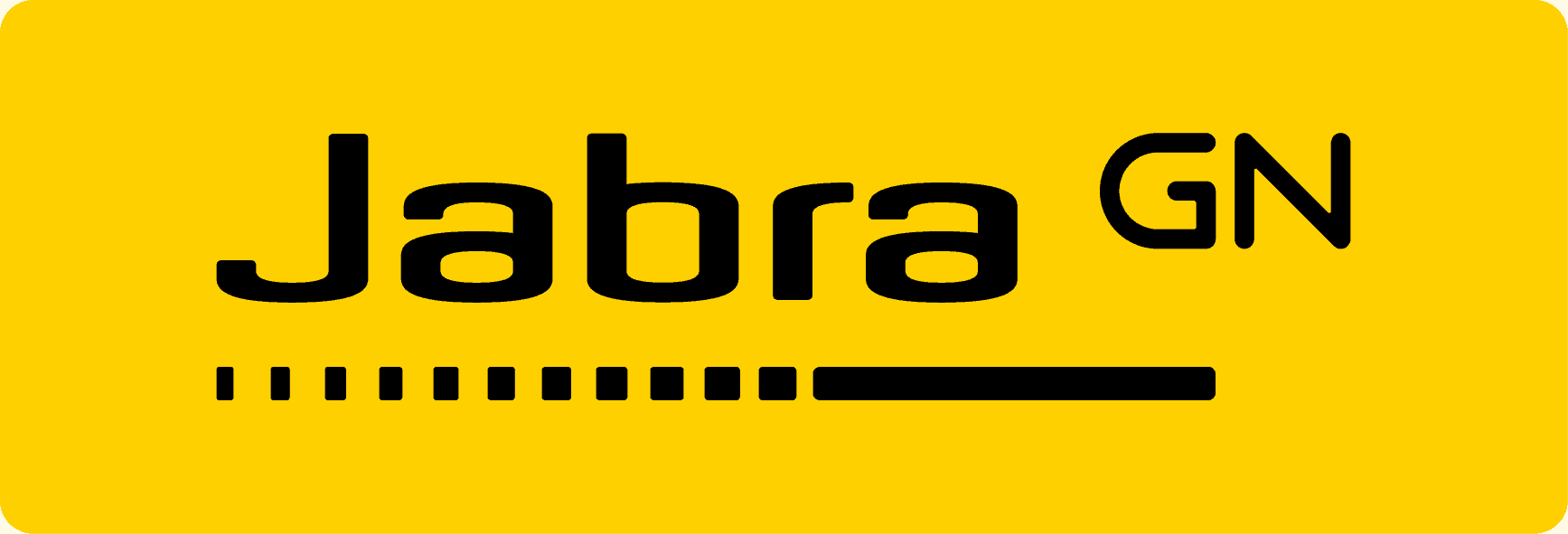ReSound vs. Phonak: Our Hands-On Hearing Aid Comparison
Phonak devices impressed us with their technological versatility and ability to connect to virtually any audio source, while ReSound stood out for its groundbreaking Auracast compatibility and superior integration with Apple products. Both manufacturers create premium hearing solutions at premium costs, but they emphasize different capabilities that could make one brand the better choice based on your unique hearing profile and needs.
Selecting the appropriate hearing solution matters tremendously for your quality of life. It’s especially important considering research finds that nearly two-thirds of adults over 70 experience some form of hearing impairment, although many never seek treatment despite the clear benefits.
In our detailed comparison below, we share insights from our comprehensive hands-on evaluation of each manufacturer’s product range, provide clarity on their pricing structures, analyze their proprietary technologies and offer guidance on determining which may better address your specific hearing requirements.
Curious how these brands stack up against the rest of the market? Check out our comprehensive guide to this year’s best hearing aids to see all our top recommendations.
Key Findings
- Phonak hearing aids offer universal Bluetooth connectivity to any device (including Android phones).
- ReSound was the first to introduce Made-for-iPhone technology and continues to lead in iPhone integration with their Smart app.
- Phonak provides exceptional solutions for severe to profound hearing loss with their Naída models, while ReSound offers specialized Enzo Q models.
- ReSound is one of only two hearing aid companies to introduce Auracast compatibility, allowing users to stream audio directly from compatible public venues.
- Both brands require visits to hearing care professionals, and neither can be purchased directly online, unlike OTC hearing aids.
FYI: ReSound and Phonak both offer outstanding hearing solutions, but they represent the premium tier of the market with higher price points. If budget is a concern, explore our detailed guide to affordable hearing aid options that won’t break the bank.
ReSound vs. Phonak
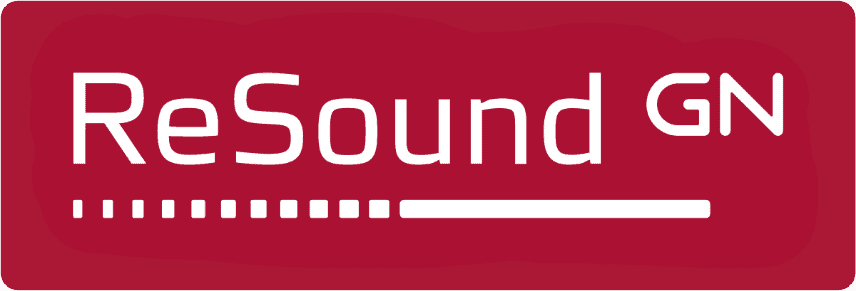
|
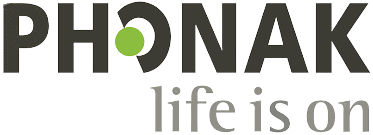
|
|
|---|---|---|
| Editor's Ratings | ||
| Price range | $2,000 to $7,000 per pair | $2,000 to $8,000 per pair |
| Style | BTE, RIC, ITE, CIC | BTE, RIC, ITE, CIC, extended wear |
| Bluetooth streaming | Yes (iPhone-focused) | Yes (all devices) |
| Battery type | Rechargeable or disposable | Rechargeable or disposable |
| Best for | iPhone users, Auracast technology | Universal connectivity, severe hearing loss |
| Smartphone app | Yes (Smart app) | Yes (myPhonak app) |
| Roger compatibility | No | Yes (built in on many models) |
| Telecoil | Available in some models | Available in some models |
| Purchase method | Through hearing health-care professional | Through hearing health-care professional |
| Hearing-loss range | Mild to profound | Mild to profound |
| Contact | ||
| Website | View Pricing Links to ZipHearing.com | View Pricing Links to ZipHearing.com |
ReSound Hearing Aids Overview
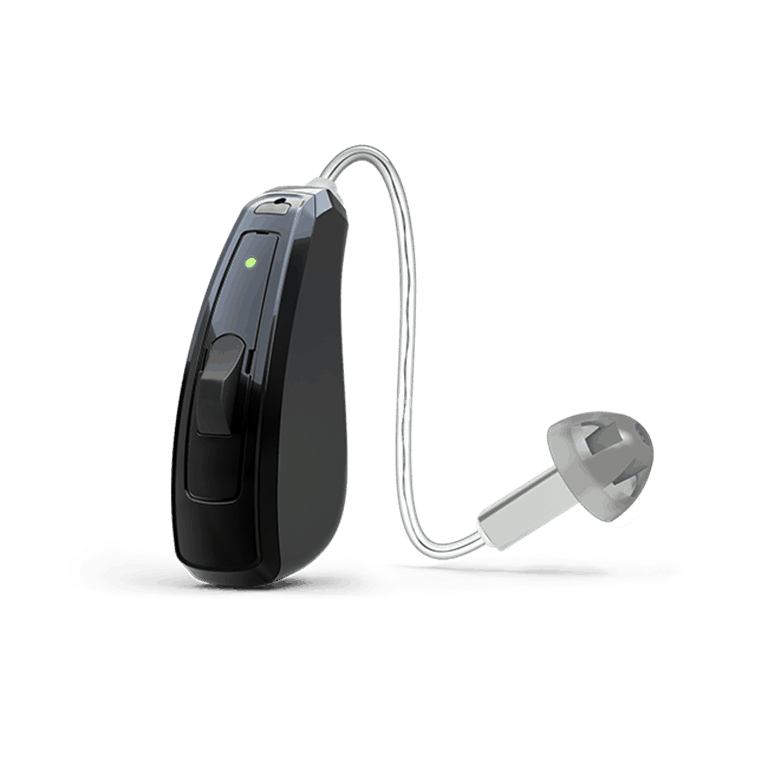
ReSound has built a stellar reputation as an innovator in hearing aid technology, particularly with their advancements in wireless connectivity. The company made history as the first manufacturer to introduce Made-for-iPhone hearing aids with their LiNX platform.
>>Read more: ReSound Hearing Aids Review
ReSound hearing aids consistently impressed us with their sound clarity and natural sound reproduction during testing across various sound environments. Their latest family, Vivia, features advanced spatial sense technology that helps users locate and focus on sounds in complex listening environments. The technology proved remarkably effective at isolating speech from background noise during testing in busy restaurants and outdoor settings.
We also appreciated ReSound’s Auracast compatibility, which gives its hearing aids accessibility points in public spaces. Auracast allows venues such as theaters, airports and conference rooms to broadcast audio directly to compatible hearing aids. We had limited opportunities to test the feature, but it provided a dramatically improved experience compared to traditional loop systems.
The Smart app is another standout feature. During our testing with users of varying tech comfort levels, we found the interface intuitive and the remote adjustment capabilities particularly valuable. One senior tester who lives in a rural area was able to have her audiologist make adjustments to her hearing aids without requiring a 45-minute drive to the clinic, a feature she described as “life-changing.”
ReSound offers a range of models in various styles, including behind-the-ear (BTE), receiver-in-canal (RIC) and in-the-ear (ITE) options. Their Vivia RIC features an innovative microphone configuration with one microphone placed inside the ear canal, which we found delivered more natural sound perception compared to traditional designs.
For those with severe to profound hearing loss, the Enzo Q provides powerful amplification while maintaining clarity. During our comparative testing with other power hearing aids, the Enzo Q demonstrated superior feedback cancellation, eliminating the whistling that often plagues high-powered devices.
Global statistics paint a concerning picture. Hearing impairment affects over 430 million individuals worldwide who could benefit from rehabilitation services, yet, according to data from the World Health Organization, fewer than 1 in 5 people who could benefit from hearing devices actually use them.
Phonak Hearing Aids Overview
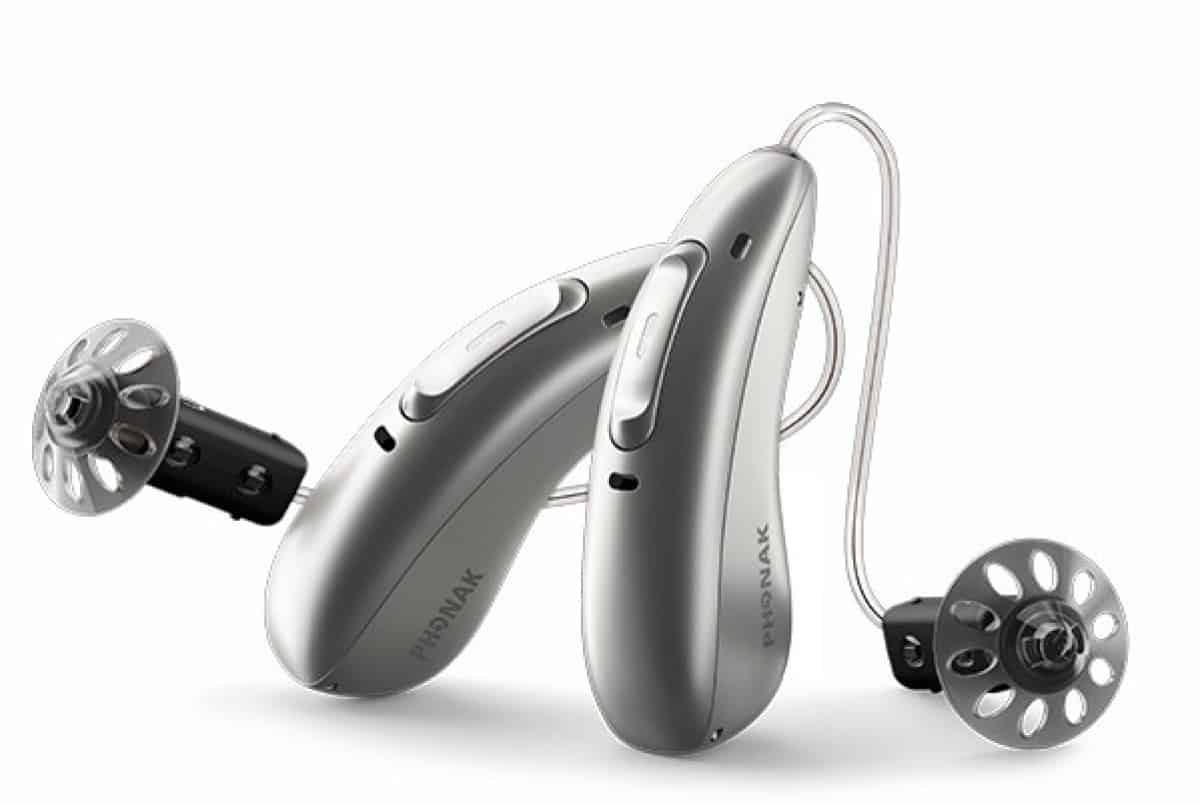
Phonak, a Swiss hearing aid manufacturer owned by the Sonova Group, has established itself as a technological innovator in the hearing aid industry. They’re particularly known for their advances in connectivity and their comprehensive solutions for various types of hearing loss.
>>Read more: Phonak Hearing Aids Review
Phonak’s devices most impressed us with their sound clarity in noisy environments. We tested their Lumity technology in crowded restaurants and found that conversations remained remarkably clear even with significant background noise.
Phonak was also the first to manufacture hearing aids with universal Bluetooth connectivity, allowing their hearing aids to connect to virtually any Bluetooth-enabled device, not just iPhones. We successfully paired Phonak devices with Android phones, basic flip phones, tablets and smart TVs, making them exceptionally versatile for users who want to stream audio from multiple sources.

Their current platforms include Lumity and the newer Infinio, which continue to build on Phonak’s technological innovations. The platforms offer features such as speech enhancement, noise cancellation and automatic adaptation to different sound environments. During our comparative testing, we found that the features performed exceptionally well in challenging acoustic settings.
Phonak also offers specialized solutions for specific hearing needs. Their Naída models are designed for severe to profound hearing loss, while their CROS and BiCROS systems provide effective options for unilateral hearing loss. The Roger microphone system, compatible with many Phonak hearing aids, delivers superior speech clarity in noisy environments and at a distance, something we found particularly valuable in lecture halls and conference settings.
Performance Comparison
We found distinct strengths and drawbacks when we compared ReSound and Phonak across various listening environments.
Performance in Quiet Environments
Both brands perform admirably in quiet home environments. ReSound’s spatial sense technology created a slightly more natural soundscape, with ambient sounds appearing to come from their actual locations rather than just being amplified. Phonak’s devices also performed excellently in quiet settings, with their Lumity and Infinio platforms providing clear, detailed sound.
Performance in Complex Sound Environments
For complex listening environments such as restaurants and social gatherings, both brands offer impressive solutions for background noise reduction, but their approaches are different.
Phonak’s directional microphone technology and noise-reduction algorithms proved exceptionally effective at isolating speech from background noise in our restaurant tests. Their Roger microphone system further enhanced this capability, outperforming virtually all competitors when used in extremely noisy settings.
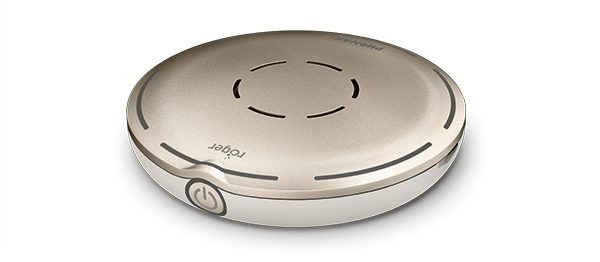
ReSound tackles those challenging environments with their Ultra Focus mode and Multi Mic accessories. They effectively reduced background noise while maintaining speech clarity in the busy cafe we tested them in. The ReSound Smart app also allows users to create custom programs for specific environments, which we found valuable for frequently visited locations.
Performance When Listening to Music
For music listening, ReSound’s devices seemed to preserve more of the natural timbre of instruments, making them slightly preferred by our musically inclined testers. Phonak’s devices exhibited excellent clarity but sometimes emphasized speech frequencies over musical nuances.
>>Read more: The Best Hearing Aids for Musicians
Outdoor Adaptability
For outdoor activities and changing environments, both brands offer automatic program switching that worked effectively in our testing. When moving from indoor to outdoor settings or entering a vehicle, both ReSound and Phonak devices quickly adapted to the new acoustic environment with minimal user intervention.
Battery Life
Battery life varies among models from both manufacturers. ReSound’s Vivia, with its charging case, impressed us by providing up to three full days of use on a single charge. Phonak’s rechargeable options showed some variability in our extended wear tests, with heavy streaming sometimes requiring midday charging for power users.
Power Amplification (for Severe Hearing Loss)
For users with more severe hearing loss, Phonak’s Naída models demonstrated slightly superior amplification and clarity in our testing compared to ReSound’s Enzo Q. The Enzo Q’s feedback cancellation was notably effective, however, making it a strong contender for users who have experienced whistling with other power hearing aids.
FYI: Research indicates that untreated hearing loss correlates with significantly higher risks of cognitive decline and emotional health issues, according to findings from Johns Hopkins Medicine, highlighting the importance of appropriate hearing solutions beyond just improved sound perception.
Features Comparison
Both ReSound and Phonak pack their hearing aids with advanced features, but their focus and implementation differ substantially.
Primary Features
ReSound emphasizes spatial awareness and smartphone integration. Their spatial sense technology uses the natural acoustics of the ear to help users locate sounds in their environment. When testing the feature in busy outdoor settings, we found that it created a more natural listening experience than many competing brands, with sounds clearly originating from their actual locations rather than appearing artificially centered.
Phonak, meanwhile, excels in connectivity and accessibility features. Their universal Bluetooth connectivity allows direct streaming from virtually any Bluetooth device. During our testing, we successfully paired Phonak hearing aids with Android phones, tablets, smart TVs and even basic flip phones for hands-free calls, offering significantly more flexibility than ReSound’s iPhone-focused connectivity.
Companion Apps
For smartphone integration, both manufacturers offer companion apps — Smart and myPhonak — that allow users to adjust settings, change programs and monitor battery status. In our usability testing with less tech-savvy users, we found both apps intuitive and well designed, but the ReSound Smart app offered more customization options for creating personalized programs.
Microphone Configuration
Phonak’s Roger technology represents a significant advantage for challenging listening situations. When testing in lecture halls and conference rooms, the Roger microphone system delivered vastly clearer sound than standard hearing aids alone or competitors’ remote microphones. ReSound offers the Multi Mic accessory, which performed well in our testing but didn’t quite match the clarity and range of the Roger system.
Tinnitus Management
Both brands offer effective masking features for tinnitus management. During our tinnitus features testing, preferences were split fairly evenly between the brands, suggesting that tinnitus relief features are highly personal and best evaluated on an individual basis.
Extra Features and Accessories
ReSound’s Auracast compatibility represents an emerging advantage for public venue accessibility. The technology allows compatible hearing aids to receive direct audio broadcasts from venues equipped with Auracast transmitters. It’s still in the early adoption phase, but our limited testing at compatible venues showed impressive results, with clearer audio than traditional assistive listening systems.
For accessories, both manufacturers offer comprehensive ecosystems. Phonak’s includes the TV Connector, PartnerMic and multiple Roger microphone options. ReSound’s lineup includes the TV Streamer, Phone Clip+ and Multi Mic. Both accessory ecosystems performed well, but Phonak’s Roger system offered superior performance in very challenging acoustic environments.
Pricing Comparison
Both ReSound and Phonak position themselves as premium hearing aid manufacturers, and their pricing reflects that market positioning. Since both brands require professional fitting through hearing care professionals, exact pricing can vary significantly depending on the provider, location, included services and specific model.
>>Read More: Does Medicare Cover Hearing Aids
ReSound hearing aids typically range from $1,000 to $3,500 per ear ($2,000 to $7,000 per pair), with their flagship Vivia models at the higher end of the range.
Phonak hearing aids follow a similar premium pricing structure, generally ranging from $1,000 to $4,000 per ear ($2,000 to $8,000 per pair). The advanced Lumity and Infinio platforms are typically at the higher end of the spectrum, especially when paired with Roger accessories.
>>Read more: The Best OTC Hearing Aids
It’s worth noting that both manufacturers offer different technology levels within each platform (typically ranging from basic to premium), which significantly impacts pricing. During our testing, we found that the midrange technology levels from both brands offered an excellent balance of performance and value for most users with mild to moderate hearing loss.
For severe hearing loss, both Phonak’s Naída and ReSound’s Enzo Q models typically command a premium price, but they provide features specifically designed for profound hearing loss that justify the investment for many users.

Support and Service Comparison
Both ReSound and Phonak hearing aids must be fitted and serviced by professional hearing care providers, but there are some differences in their approach to ongoing support and service.
Phonak offers a global service network that proves particularly valuable for frequent travelers. During our research, we found authorized Phonak providers in different countries can perform basic service under warranty, though some charge consultation fees. ReSound’s service network is also extensive, but it showed slightly less international coverage in our provider search.
For remote adjustments, both brands offer excellent capabilities through their smartphone apps. ReSound’s Smart app includes their Assist feature, which allows audiologists to make programming changes without requiring an office visit. In our testing, the feature worked seamlessly, with programming updates delivered directly to the hearing aids via the smartphone app. Phonak offers similar remote adjustment capabilities through their myPhonak app, with comparable performance in our evaluation.
>>Read more: ReSound vs. Widex
Warranty terms vary by provider for both manufacturers, typically ranging from one to three years and often including some level of loss and damage coverage with a deductible. Based on our assessment of online reviews and testimonials, both providers tend to offer solid service in this regard.
Overall, the service experience depends more on the specific hearing care provider than the manufacturer, since both ReSound and Phonak maintain high standards for their professional partners. Phonak’s more extensive global network, however, gives them a slight edge for international travelers.
Which Brand Is Right for You?
For users with mild to moderate hearing loss who prioritize natural sound experience and primarily use Apple products, ReSound often provides the more satisfying experience. Their spatial sense technology and Smart app create a more customizable hearing experience that many iPhone users prefer.
For people with more severe to profound hearing loss (roughly 2.2 million Americans), those who value connectivity across multiple devices or those who need specialized solutions for challenging listening environments, Phonak’s technological advantages and comprehensive accessory ecosystem make them the stronger choice.
Based on our extensive testing and evaluation, here’s our guidance on choosing between ReSound and Phonak.
Choose ReSound if you:
- Primarily use Apple products and want the best iPhone integration
- Are interested in emerging Auracast technology for public venues
- Prefer a more natural spatial awareness in your listening experience
- Want the longest battery life in a rechargeable hearing aid with a charging case
- Have mild to moderate hearing loss with an emphasis on spatial awareness
Choose Phonak if you:
- Want universal Bluetooth connectivity with any device, not just iPhones
- Have severe to profound hearing loss that requires powerful amplification
- Need solutions for unilateral hearing loss (CROS/BiCROS)
- Frequently find yourself in challenging listening environments where Roger microphones would help
- Want the most comprehensive accessory ecosystem for severe hearing challenges
Both brands offer exceptional quality and performance, but their different approaches to sound processing, connectivity and specialized features make them better suited to different types of users.
For those seeking more budget-friendly alternatives, consider exploring our reviews of Jabra Enhance hearing aids, Eargo devices or options from MDHearing — all of which offer quality solutions at lower price points.
Frequently Asked Questions
-
Are ReSound or Phonak hearing aids more expensive?
Both brands are premium-priced, but Phonak can reach slightly higher price points for their most advanced models with Roger technology. ReSound typically ranges from $2,000 to $7,000 per pair, while Phonak ranges from $2,000 to $8,000 per pair, depending on technology level and features.
-
Which brand is better for iPhone users?
ReSound generally offers superior iPhone integration as the pioneer of Made-for-iPhone hearing aid technology. During our testing, their Smart app provided more customization options and slightly more reliable connectivity with Apple devices. Phonak, however, also offers excellent iPhone compatibility while adding universal connectivity to non-Apple devices.
-
Can I stream phone calls with both brands?
Yes, both ReSound and Phonak offer models that can stream phone calls directly, but they excel with different phone types. ReSound works seamlessly with iPhones, but it may require the Phone Clip+ accessory for some Android models. Phonak provides universal connectivity to virtually any Bluetooth-enabled phone without additional accessories.
-
Which is better for severe hearing loss?
Both brands offer excellent solutions for severe to profound hearing loss. Phonak’s Naída models provide slightly more powerful amplification that performed marginally better in our comparative testing, while ReSound’s Enzo Q features superior feedback cancellation that eliminates whistling. Your audiologist can help determine which would work better for your specific hearing profile.
-
What does Auracast compatibility mean?
Auracast is an emerging Bluetooth technology that allows public venues such as theaters, airports and conference rooms to broadcast audio directly to compatible hearing aids. ReSound is among the first manufacturers to incorporate the technology, which can provide a superior listening experience in equipped venues compared to traditional assistive listening systems.
Methodology
Our review team conducted thorough hands-on evaluations of ReSound and Phonak’s complete product lineups over a 12-month period. Our systematic approach included:
- Environmental performance assessment: Each brand was evaluated in multiple settings, including quiet rooms, crowded restaurants, outdoor spaces, music venues and lecture halls to measure performance across different acoustic challenges.
- Sound quality evaluation: We used both standardized audio samples and everyday listening scenarios to compare sound-processing capabilities, focusing on speech intelligibility, noise management and music fidelity.
- Battery performance testing: Extended usage tests verified manufacturer battery claims and measured how different features and streaming activities affected overall battery longevity.
- User experience analysis: We evaluated comfort, ease of use and learning curves for devices and companion apps with testers of various ages and technical abilities.
- Comparative pricing study: Our team mystery-shopped providers across multiple regions to document real-world pricing and identify factors affecting cost differences.
Our evaluation framework examined sound quality, feature availability, connectivity options, battery efficiency, user experience, app functionality, accessory integration and overall value proposition. We supplemented our findings with input from audiology professionals to ensure our assessments aligned with clinical best practices.
